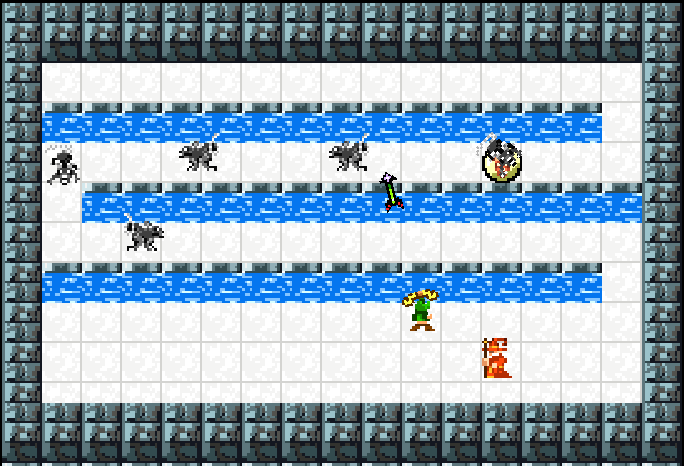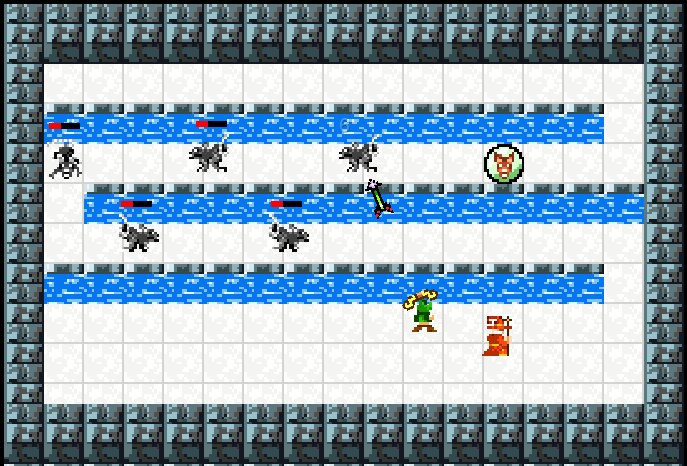With all three summons operational again, now begins the task of finding a good starting point for balancing.
The obvious things to tune are the values for creature health, damage, attack rate, etc. I use spreadsheets to do this sort of thing:
 The orange headings are the creature’s attack stats, which can be used to compute the outcome of an encounter. Those are in green. For example, with these stats, Shaedu can slay 0.44 skeletons per second provided direct shots and the ability to attack at full range.
The orange headings are the creature’s attack stats, which can be used to compute the outcome of an encounter. Those are in green. For example, with these stats, Shaedu can slay 0.44 skeletons per second provided direct shots and the ability to attack at full range.
The mitigated damage value is how much the creature would damage an armored foe. I’m currently just using an armor value of 2, which reduces damage of each attack by 2. This means lower attack power is severely reduced compared with strong attack power (compare the skeleton’s DPS drop from 4.50 to 3.00 with the rat’s DPS, which is being slashed from 4.80 to 2.40).
This spreadsheet is only really useful as a starting point, because there are so many other variables that impact on a creature’s effectiveness and survivability. Choke points are where Bloodfire does best, because the bombs hit multiple foes if they are clumped up. Shaedu does great in corridors where the monster has to head directly into the line of fire–given a slow enough release rate, she can actually take out an infinite number of skeletons or rats. And Aeox is most effective in 1v1 attacks, foe example, when he is guarding a doorway.
Before fine tuning these values, I have to decide on which AI features the summons have. For example:
- Can Aeox start an attack on an approaching monster before they are in range to strike back? This makes an enormous difference if he is just cleaning up wounded foes by last-hitting them. It means that if monsters come in one at a time with less than 6 HP, he won’t be damaged by them. (I do plan to add this pre-emptive strike, because I think this is strategically cool).
- Do Shaedu and Bloodfire lead their shots? Until today, they just fired at the monster’s current position. Fast-moving rats, when they are running laterally, become impossible for her to hit, because in the 10 frames it takes the arrow to arrive, the rat’s already moved away.
To calculate the shot lead, it just looks at the monster’s current velocity, calculates how long it will take for the arrow to reach the target, and looks ahead that far in the future to shoot where the monster will be.
Of course, if the monster changes directions or stops, the shot might still miss. This is so effective, I’m curious if it should be a powerup, or just natural behavior. In a scenario like this, see how much difference it makes:


The next step is to create a few test maps and see how well the summons do in a variety of room layouts. It’s important that they be considered roughly equivalent in their effectiveness. The synergy is even more important–Aeox and Shaedu working together, with proper placement, will take out twice as many foes as they would if they were placed one after the other.